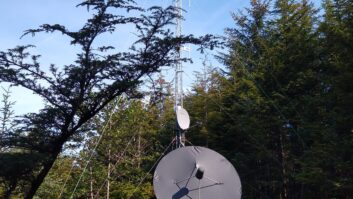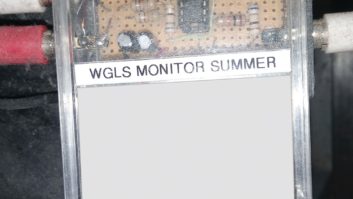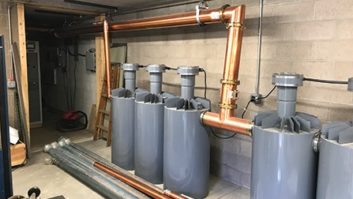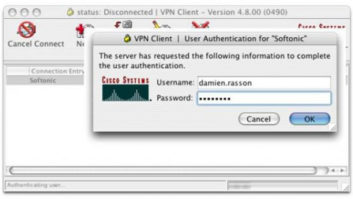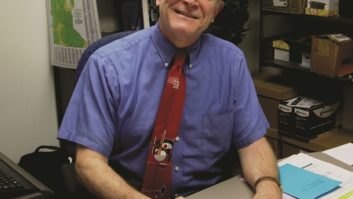
Fig. 1: An inexpensive alternative to a project box.

Fig. 2: A burned filament voltage rheostat. Bill Harris is the market engineering manager for Cumulus Media in Albuquerque, N.M.
Recently Bill needed to use a 120 VAC relay to switch a low-voltage DC circuit at a transmitter site. He didn’t have any little project boxes or other enclosures for mounting the relay. Then he spotted a spare plastic electrical tape box.
Bill cut a hole in the top to fit the socket, then cut a couple of slots for the wires and taped it closed. Problem solved. The finished product is shown in Fig. 1.
Sometimes the best solutions are the simplest. Thanks for sharing, Bill.
***
Phillip Vaughan is with KFRG(FM). He passes on a neat technique that he discovered.
Having a number of studio equipment racks with very poor lighting inside, Phillip used three or four white LED strips, mounting them to the back wall and tying them to a voltage supply with a power switch.
When you need to work in the rack cabinet, just switch on the supply. This eliminates the need for holding a flashlight or trouble lamp; and by using several LED strips, the interior is illuminated nicely.
Phillip found the white LED strips on the MCM Electronics website. We posted it on the Radio World Links page, radioworld.com/links.
***
Mike Murrey is technical operations director for TKC Inc./Vacationland Broadcasting. He poses a question to Workbench readers: “So what do you do when you don’t have a spare 25 ohm, 100 W filament voltage rheostat lying around?”
Mike’s answer was to break out the surgical gear and do his best (or worst, depending on how you look at it).
When his filament rheostat burned (Fig. 2), Mike disassembled it (Fig. 3) and soldered a nice, big blob of solder to serve as a wiper contact (Fig. 4).
Don’t laugh. It worked for about a week before he got a replacement installed. Yes, it ran kind of hot, but not hot enough to melt the solder. Ha! Mike FTW!
Broadcast engineers have a knack for temporary fixes. We sometimes need to think out of the box, just to keep equipment on the air. But the key word here is temporary. All too often, a temporary fix becomes permanent, and that’s not good for the engineer’s reputation or the long-term viability of the station.

Fig. 3: Disassemble to repair the bad contact.

Fig. 4: The repaired rheostat with its solder blob contact. If you have to do something unorthodox, make up a sign to post on the equipment noting its impermanence. This will ensure that you won’t forget about the “fix,” and it will alert any other engineer who may stumble upon the equipment as to the temporary condition.
***
Consultant and fellow Radio World contributor Tom Osenkowsky chuckled as he read in Workbench about radomes that filled with water because they’d been mounted upside down.
Tom tells of tower riggers using a fluorescent lamp to determine whether an antenna bay was radiating. Not a bad idea except for the RFR exposure issues. The same is true for unclogging radome weep holes: Be sure power is off or greatly reduced.
He passes on a related tip: Insects can clog weep holes in the base of AM towers.
Use caution when cleaning out these weep holes. More than once someone trying to unclog a base has been scorched by boiling water trapped inside. Of course, the RF to the tower is switched off when this happens, but still. Give the water some time to cool before you start the cleaning process.
Contribute to Workbench. You’ll help your fellow engineers and qualify for SBE recertification credit. Send tips to [email protected]. Fax to (603) 472-4944.
John Bisset has spent 43 years in the broadcasting industry and is still learning. He is SBE certified and is a past recipient of the SBE’s Educator of the Year Award. He recently joined transmitter company Elenos USA.





